Koala bears are the cutest tree-hugging animals in the world. Yes, I absolutely love them. They are fascinating marsupials. Perhaps it is because they are always hugging trees that makes me want to hug them too. These cute cuddly guys are tree-climbing mammals native to Australia. They can be found in the eucalyptus forests of southeastern and eastern Australia. They are not found in any other parts of the world. Take a look at our video below for some amazing shots from the Australian Reptile Park and learn some fascinating facts about koala bears.
The first joey born in the Australian Reptile Park after the fires was named Ash and it is absolutely adorable. Take a look at the video below
Quick and Easy Navigation
Koala Bears Facts Video
Koala Bear Facts for Kids Video. Fun Facts about Koalas – Australian Wildlife – Marsupials. Meet Ash the first Koala born in the Australian Reptile Park since the 2019 wildfires.
SAVE FOR LATER


15 Koala Bears Fascinating Facts
- Despite the name, the koala bear is not a bear, it is a marsupial and the females carry their babies in a pouch.
- They can be found in the eucalyptus forests of southeastern and eastern Australia, up in the trees perched between the forks of the tree’s branches.
- The average size of a koala bear is 2-3 feet and the average weight is between 20 and 25 pounds.
- They have dense greyish fur that feels like sheep’s wool, round fuzzy ears, and a big nose.
- They are adept at climbing because of their powerful forearms, opposable fingers and toes, rough pads on hands and feet, and sharp curved claws.
- Their hands have 5 fingers and two of them are thumbs.
- Their feet have a toe that is really two toes fused together, which they use to groom themselves, and a toe that doesn’t have a claw that acts like a thumb for gripping.
- They have human-like unique fingerprints. Because they are almost identical to humans’, scientists have difficulty distinguishing them even with careful analysis under a microscope.
- Koalas eat eucalyptus leaves, but not just any eucalyptus leaves. Australia has over 700 different variations and koalas only eat about 50 of those. They use their excellent sense of smell to choose the most nutritious ones with the lowest toxicity.
- Because eucalyptus is toxic and tough, the koala’s digestive system works really hard to break it all down. Also, this eucalyptus diet has limited nutritional and caloric content. This combination leaves the koalas very tired so they sleep almost 20 hours a day to conserve energy.
- Koalas store food in their cheeks until it is ready to be chewed and consumed.
- Scientists have discovered that Koalas hug trees to keep cool. They used thermal cameras and found that the branches were cooler than the surrounding ambient temperature. In the study, the koalas hugged the trees tighter in hotter weather.
- They are solitary, they mark their trees with their scent, they avoid confrontations and interactions and communicate with the help of loud vocalizations. They spend most of their day on trees and come down at night to switch trees looking for more leaves.
- Baby Koalas called “Joeys” gestate in the mother’s womb for only a month and are then born the size of a jelly bean, blind and furless. They immediately climb into the mother’s pouch and continue to develop for about 6 months. After this time, they’ll ride on their mother’s back for another six months, only using the pouch to feed and sleep.
- The average lifespan in the wild is about 20 years.
Koala Bear Conservation Status
The Koala Bear is the only extant member in its family, “Phascolrartidae.” There were many others in this family from eight different genus that are now extinct. Currently, this remaining extant member is listed in the IUCN Red List as vulnerable with a declining population. And they named them as one of ten animals most affected by climate change. Because increasing temperatures decrease the nutritional value of their only source of food, the eucalyptus. It also increases the risk of drought and wildfires.
The unprecedented and devastating bushfires in 2019 harmed many koalas and destroyed much of their habitat. Many wildlife hospitals, rescue organizations, zoos, and volunteers have stepped up to help, with the goal of rehabilitating and releasing them back into the wild. Now, the priority is to restore their habitat.
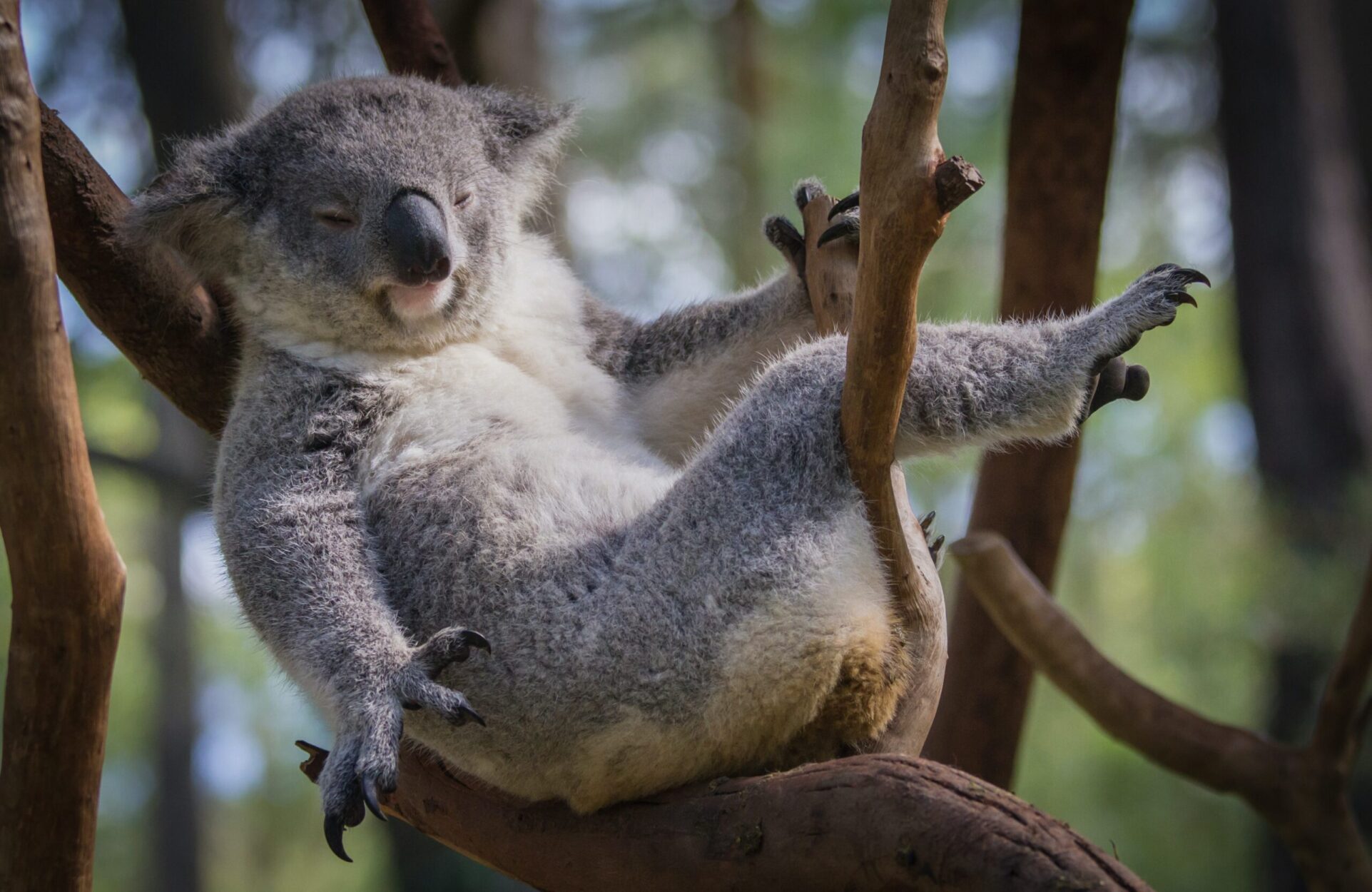

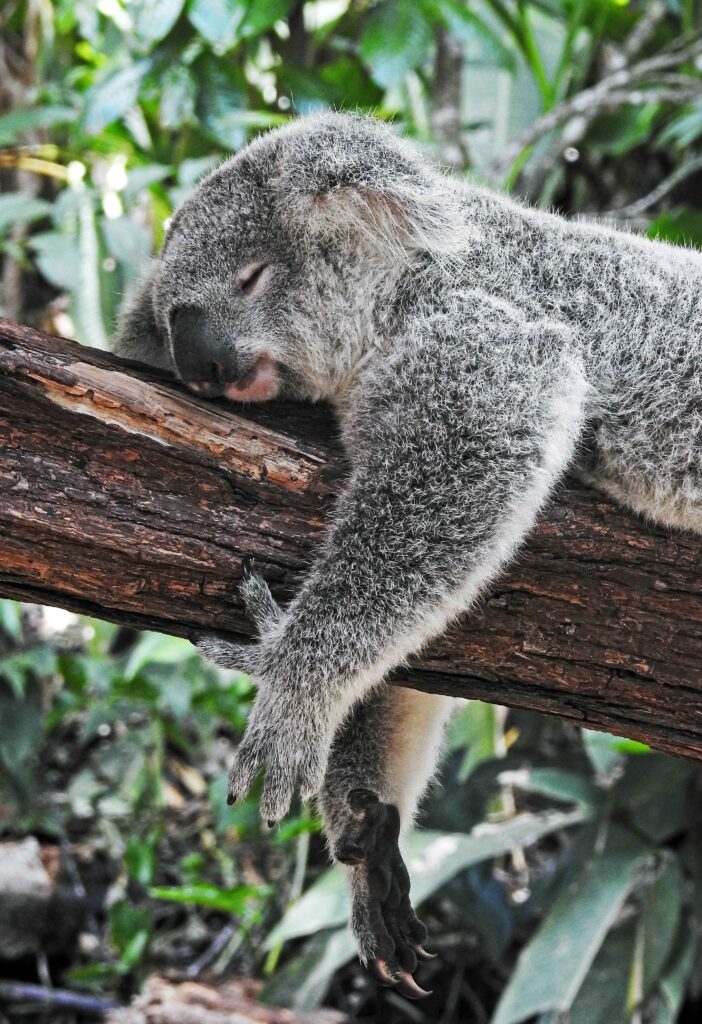
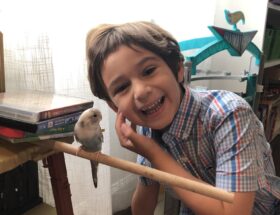
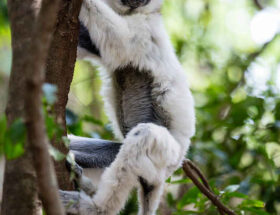
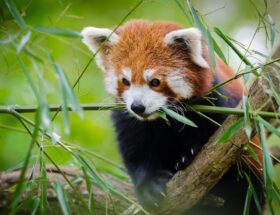



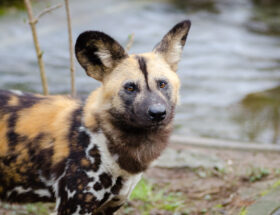
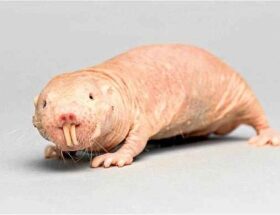
[…] Mammals, Wildlife […]